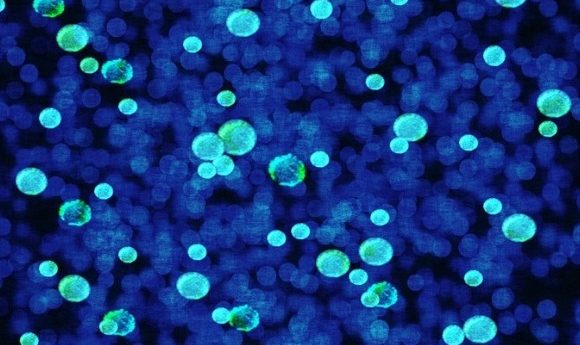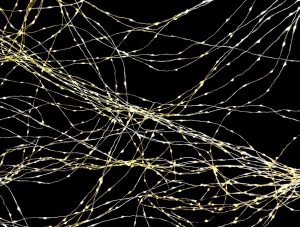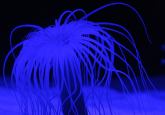Neurons on nicotine

Researchers gain insight into the intracellular actions of nicotine, discovering a key factor in the development of addiction.

When nicotine enters the brain, it binds to nicotinic acetylcholine receptors (nAChRs) on the surface of neurons. Usually bound to by the neurotransmitter acetylcholine, activation of these excitatory receptors triggers the action potential in the cell, releases chemicals of reward and stimulates feelings of happiness.
However, the nicotine does not stay on the surface of cells, it can also permeate into the neurons and alter their activity from the inside out. The endoplasmic reticulum is an organelle within the cell that processes and stores proteins, including the nAChR, before releasing them to other locations both inside and outside of the cell. It is believed that any nicotine that has entered the cell can interact with these stored receptors though to what effect was previously unknown.
In a recent study from the California Institute of Technology (CA, USA), researchers hoped to gain insight into the impact of this interaction within the cell by developing a biosensor to determine the action of the drug while it is in the cell.
“Making movies of the cells containing biosensors allowed the team to discover that nicotine enters the endoplasmic reticulum within seconds of appearing outside of the cell.”
The sensor is formed from an inactivated fluorescent protein and a special protein that can open and close. It is designed so that, as the protein closes around the drug, the fluorescence is activated allowing for the visualization of the location and quantity of the nicotine molecules
Making movies of the cells containing biosensors allowed the team to discover that nicotine enters the endoplasmic reticulum within seconds of appearing outside of the cell. The results, recently published in the Journal of General Physiology, also showed that the levels of the drug inside of the cell is enough to affect the nAChRs both in their assembly and in their transportation to the cell surface membrane. This makes the cells more sensitive to nicotine, enhancing the rewarding feeling felt following cigarette use, which is a key component in developing an addiction.
The research team, led by Henry Lester, now want to test their theory in vivo, using the sensors inside the neurons of mice. They are also developing biosensors for other drugs, such as antidepressants and opioids, and hope to be able to observe the extra- and intra-cellular actions of those compounds.





